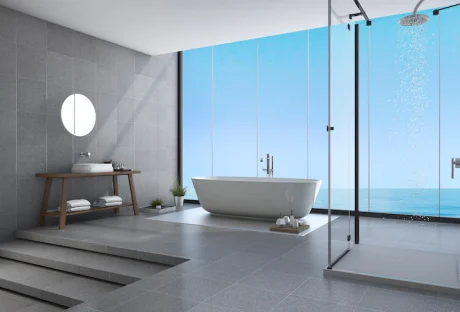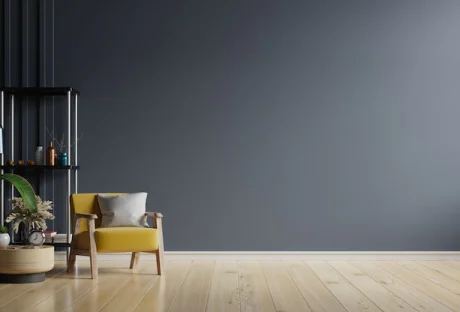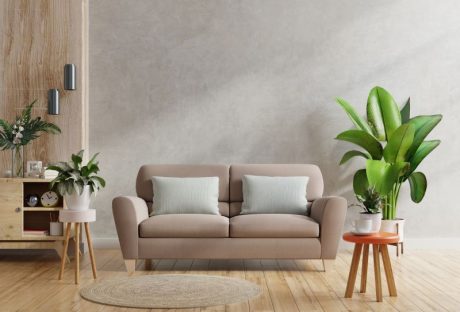Category: Home Improvement
ContentRally is a leading source of reliable news and trending topics on Home Improvement. Get hard-to-find insights and advice on Home Improvement from industry-specific leaders.

How To Get Rid Of Mice & Roaches From Your Space?
The presence of mice and roaches in your home demands urgent attention. They’re nuisances that make living in your space uncomfortable and spread infections. Since they’re capable of reproducing in shorter periods and en masse, their infestations are soon uncontainable if neglected. Thankfully, there are many pest control methods designed mainly to fix rodents' and cockroaches’ problems. While those are quite reliable, there are also preventive efforts required of you. 1. Keep Your Apartment Clean Cleaning up your space is primary to overcoming any pest issue. That’s because most of them are often attracted to floor litter. They find crumbs edible to feed on and stick around afterward in case there are more. Avoid stacking up unused papers, old fabrics, and cardboard.Vacuum your kitchen floor, especially cabinet and fridge areas.Empty leftovers in plastic bags and dispose of them appropriately.Use soap to remove oil and grease films on sinks after washing dishes.Declutter your entire home until it’s evident that no dirt or grime is inviting for mice and rodents. 2. Watch For Pest Signs One thing is certain about pests; they often leave trails. If you haven’t been observant, look for these signs once you suspect them around. For mice, you’ll likely see different gnaw marks on objects and walls. You can also find their nests made from shredded paper, fabrics, strings, hays, etc. Often, their brown pellet-shaped droppings and urine pillars, appearing as small vertical mounds, are easily sighted. While the most confirmatory is seeing them scurry around your place at different hours of the day, but majorly night time. Likewise, for cockroaches, noticing their activities is significant proof. And aside from their droppings, they produce dark and irregularly-shaped smear stains in moist locations. Their cylindrical egg cases are indications that they’re sprawling in numbers already. While sighting their nymphs and adults validates that fact. Occasionally, they leave their shed brittle-looking skins behind during molting. While you embark on your home’s inspection, vital places to check are your kitchen, pantry, bathrooms, closet, and dining. Look carefully around your furniture and appliances. These critters frequent your drawers and food packages, so be thorough in these areas. Use a flashlight in dimly lit or dark places to intensify your search in difficult-to-reach corners. 3. Seal Pest Entry Areas The small sizes of pests make them fit the tiny passages easily. Mice, for example, can nibble their way through your wall, pipeline, hole, etc. However, some basic repairs can seal these openings to deter them from your home. With materials like caulks, copper mesh, stainless steel wool, wire mesh screen, etc., you can get the job done to perfection. Focus on holes and cracks around plumbing works, vents, kitchen appliances, fireplace, basement, drains, and cabinets. Openings near your door and window frames can be fixed with water-based latex paint. Escutcheon plates are equally excellent sealants around pipes. 4. Use Pest Control Products Commercial pest products are often the last resort when it seems out of hand. With numerous manufacturers, you have an array of options to choose from. But while you try your hands on some of these products, you must ensure that you follow the user directives. Glue and snap traps work best for mice, while bait stations, insect dust, and traps are appropriate for roaches. If you’re unsure how to handle the infestation with these chemicals, reach out to a pest control service near you immediately. Read Also: Safety Triangle: Three Things Your Soon-To-Be House Must HaveProfessional Roofing Services And Different Decorating Styles
READ MOREDetails
4 Great Ways To Modernise Your Bathroom
Your bathroom should be a relaxing place for you to spend time in. For many of us, our bathrooms are small, and they can be expensive to improve. However, there are ways that you can modernize your bathroom, without breaking the bank. You could add new furnishing like shelves and cupboards, mirrors, and lighting and finish off your space with a few colorful accessories that reflect your home’s modern aesthetic. 4 Amazing Ways To Modernize Your Bathroom Below, we’ll look at 4 of the best ways that you can spruce up your bathroom with a modern twist. 1. Install a towel rail One of the best additions to a modern bathroom is a towel rail. Sometimes, if you’re dealing with a smaller space, you may find that a column radiator is difficult to fit. However, towel rails are installed vertically, so you don’t have to worry about them taking up valuable wall space. Heating your bathroom is essential and means that you can create a warm and cozy space to relax and unwind after a hard day. As well as warming the space, a towel rail works effectively at drying the room out, meaning you don’t have to worry about mold and condensation forming. Towel rails come in all shapes, heights, widths, and colors – they are popular in many modern households and can even be used as a centerpiece in a room, your radiators no longer need to be boring! 2. Add a mirror If your bathroom is small, installing a mirror can not only make it look more modern but can also make it look more spacious too. Adding a mirror helps to bounce light around the room, creating an airy feel even in the smallest of bathrooms making it look more attractive. Mirrors come in all designs, and if you’re looking for a particularly modern product, you could choose a mirror with lights installed into it, clocks, and even Bluetooth for the tech-savvy homeowner. A bright, airy bathroom will improve the way it looks and feels – you may even want to spend more time in there! 3. Renew flooring Bathrooms tend to be small spaces in many homes, so if you’re looking for a way to modernize yours, renewing the flooring could be a great way of changing the whole look of the room on a budget. If your bathroom has old or broken floor tiles, or it doesn’t suit the aesthetic that you’re hoping to achieve, you can choose from floorings like tile, laminate, and vinyl to improve your bathroom’s entire feel – and if you can install them yourself, you may save yourself an extra bit of cash. With a range of flooring available, you can choose something that suits your home’s aesthetic and is practical and hygienic too. 4. Add accessories Accessories can really modernize your bathroom and make it more modern. You could add new towels in a bright color to lift the room or choose a couple of different colors that contrast and stand out. You could replace old storage with new shelves, which not only improves the look of your bathroom but the practicality of the room too. You can choose metals like chrome or stainless steel which are popular in modern homes, that stand the test of time, or you could add a fancy shower curtain, toilet seat, or scented candles and infusers. Additionals: Bathroom Remodeling Tips and IdeasUsing Feng Shui in Your Bathroom DesignHow to Keep Your Bathroom Clean All the Time5 Hotel Housekeeping Tricks You Need To Clean Your Bathroom
READ MOREDetails
6 Easy Ways To Make Your Home More Appealing To Buyers
Are you planning on selling your home? There are several ways to make it more appealing to buyers, and this guide looks at some of them. These include adding more plants, repainting your walls, and upgrading your appliances. Keep reading if you want to find out more. Checkout Six Easiest Ways To Make Your Home More Appealing To Buyers: 1. New Paint Job Paint jobs can make your home more appealing to buyers. However, this trick doesn’t cost a lot of money and is one of the most effective choices on our list. Although you could go for the same color as you had before, we would advise you to go for a shade that’s in trend. You could add a bit of value to your home by being wise with the paint type you choose. However, go for energy-efficient options, they would help lower your energy bill by bouncing heat. 2. Indoor Plants Having plants around the house can make it more appealing. They would give your home a more modern feel, and make it feel green too. Just be mindful to not go overboard and have too many plants – bugs are a risk. Also, having too many plants in a home can increase its humidity. This is not what you want, unless you live somewhere that’s very dry. 3. Remove Any Carpeting Do you have wooden floors? If there are carpets on them, go ahead and remove them. Hardwood floors are very popular right now. However, you could especially get a good price for your house if the wood is high-end, like timber or oak. Let it shine. 4. Upgrade Your Appliances New appliances will not only tempt more buyers but will also increase property value. You are advised to splurge on the appliances to get the most bang for your buck. Be mindful and make purchases that will go with your home’s color palette. 5. New Windows and Doors Just like adding new appliances will help, so will installing new windows and doors. They can make your home look newer, and completely revamp its style. If you’re looking for Doors or windows in Collingwood, Clearview, Adjala or Bradford, these towns have a lot of sellers to work with, so be wise with who you choose. As replacing your windows is a more major suggestion, we would advise you to look for sellers that offer cheaper rates. If you’re in Ajax windows company are known to offer cheaper rates. You might benefit from working with a shop in this town. 6. Stage Your House Hiring a staging company wouldn’t hurt. They would store your furniture away and bring in their own. In addition, they would bring specific pieces to make your home look better and complement its features. Final Thoughts Considering all of the points that were run through, what do you think? There are several ways to make your home more appealing to buyers. Some of them include new paint coats and buying new appliances and windows too. Hopefully, you found everything that was discussed useful. Read Also: Why Installing A Carport At Your Home Is A Good Idea?Choosing a Mortgage Broker for Your Home Loan ApplicationTired Of Seeing Your Old House? Here’s What You Need To Know
READ MOREDetails
Top Reasons Why Your Hot Water Tank Takes So Long To Heat Up
Most people take hot water for granted. You turn on the faucet, wait a few seconds and you have hot water. It simply works, until it doesn’t. In the majority of cases, homes have a water tank. This fills with cold water and relies on heating elements inside the tank, the exact number of elements will depend on the size of the tank. The elements take a short time to heat the water, the exact amount of time will depend on the number of elements in your tank and its size. Of course, even in modern Australia, there are people surviving without hot water and some struggling with adequate water supplies. An issue that is likely to get worse. Once the water has been heated up, the thermostat will turn off. When you use some of the water, the tank will top itself up and the heaters will reheat the water. This approach means it’s possible to empty your tank and you’ll need to wait for it to refill and heat again. It takes time, but sometimes this takes much longer than it should, that’s when you know your water heater needs a little help. Get It Serviced The first step is to get your hot water heater serviced by a professional with experience in hot water servicing. This will highlight any issues and, if the servicing is done regularly, it should prevent any issues from escalating. It’s advisable to get an annual service. Flush The Tank The professionals can do this for you or you can flush your hot water tank yourself. This is one of the most common issues and will slow the speed at which the heater can warm your water. In effect, sediment from the water settles at the bottom of your tank. This reduces the ability of the heating elements to warm the water and can place additional strain on the tank. Sediment also encourages corrosion which can create leaks in your tank. The best approach is to drain the tank and flush clean water through it several times. This should help to remove the sediment and improve the speed at which it heats the water. Replace Heating Elements Most hot water tanks have two or three heating rods. This is a more efficient approach and heats the water faster.? However, it is possible for one of the heating elements to fail while the others continue to operate. Naturally, this will slow down the speed at which the water can be heated. If two elements fail then you’re likely to notice the tank takes a long time to heat and the water will probably be cooler than normal. Size Of Tank The smaller the tank the faster it will reheat the water Of course, go too small and the tank will run out of water mid-shower. But, if the tank is too large it will take much longer for the water to reheat, which can be frustrating. The only cure is to replace the water heater with one that’s the right size. Read Also: Advantages Of Using A Water Heater At Home5 Easy Ways to Detect a Water Leak in Your Home8 Things To Consider When Purchasing A Water Tank Online
READ MOREDetails
Top Home Remedies To Make A Floor Non-Slip
You may not realize that a floor is slippery until you or a loved one slips over it. This is often the case with entrance halls, or with the garage. With your shoes on, you probably have enough grip. But take them off, and it’s an accident waiting to happen. Why use epoxy for garage floors? Go for polyaspartic coatings for the ultimate protection from a sudden slip! Marble floors can also be an issue, as can garage floors. These are usually concrete but, once the concrete gets oil and other compounds on it you’ll realize that it’s also slippery. The good news is there are several home remedies that can reduce the slipperiness of the floor. Let's Check Out Top Home Remedies To Make A Floor Non-Slip: 1. Epoxy Coating This is the most expensive and time-consuming option. It involves layering an epoxy coating on top of an existing concrete floor or creating a new floor with epoxy. You can undertake this job yourself however if you want the best possible finish it’s best to use the professionals in epoxy floor coatings. They’ll do the job faster, and neater, and it will come with a guarantee. In fact, the cost in the long term is significantly cheaper than most options. This is because epoxy flooring is very tough and durable. You can also choose your color and even a pattern you want to emboss not the floor. This guarantees your epoxy flooring doesn’t just look stunning and offers a non-slip solution. It is also unique to your home. Related Resource: Use Floor Polishing for Keeping Your Flooring Looking New 2. Vinegar & Water Vinegar is a powerful cleaning agent. If you add some to warm water you’ll be able to mop your floor thoroughly. You should proceed when dealing with a hardwood floor, they don’t generally like moisture. The vinegar will remove all the debris on the floor, eliminating issues that can cause the floor to be slipperier. It should be noted that vinegar and water clean the floor to make it safer, it doesn’t add a non-stick coating. 3. Non-stick Products There are an array of non-stick products on the market. It’s worth noting that they are not all created equally. You’ll need to consider which products are designed for your type of floor. Then, it’s a good idea to look at different reviews to help you choose the one that suits your needs best. Once you have chosen a product you’ll need to read the instructions and do as it says. Some can be used neat, others require the addition of water. Apply them in accordance with the guidelines and, once they have been on for long enough, make sure you dry the floor thoroughly. 4. Use Rugs Another way to reduce slippery floors is to add rugs to the most dangerous spots. You’ll need to invest in rubber-backed rugs as these will stick to the floor where you put them. The rugs will then give grip and comfort to anyone walking over them, allowing people to move around the home in confidence. Don’t forget, before you apply any product to your floor it’s important to sweep it and then mop it. This removes the debris that could cause an issue. Read Also: Treatments and home remedies to tackle tinnitus 5 Tips on effectively picking a tile floor cleaning machine Ideas for Modern Flooring Designs for Home Improvement Plans
READ MOREDetails
How To Choose the Right Brass Range Hood for Your Kitchen
If you’ve been shopping for range hoods, you’ve noticed that brass hoods are beautiful and come in a range of styles and types. You may have a good idea of what you want your hood to look like in your kitchen but have no idea how to actually choose the right one. You should consider what kind of ventilation and exhaust you will need, where you plan to place your hood, and what added figures would simplify your life. Here are a few ways to narrow down the list to the right brass range hoods for your kitchen: Top 4 Ways of Selecting The Right Brass Range Hood For Kitchen: 1. Ranges Hoods for Homes with Ducts The ultimate function of a range hood is to ventilate the smoke and particulates that come from cooking. You’ll want to consider whether you need ventilation in the unit or hook up the unit to your existing ventilation. Many homes have full external venting. A fan will push air and smoke up through ductwork and into the attic or outside of the house. Unless you are building your home or fully remodeling your kitchen, you probably already have this setup. You will need to decide if you want an integrated or remote blower on your brass range hood. An integrated blower will be located in the range hood itself. A remote blower will be located in the attic or somewhere along with the ductwork. A remote blower is generally quieter, as long as you have a space to set it up. 2. Range Hoods for Homes without Ducts If you don’t have a duct system in your house, you can choose a brass range hood and install a ductless fan kit. A ductless fan will filter and recirculate the air to clean and deodorize it before releasing it back into the room. Under-cabinet hoods use this type of ventilation, but you can also purchase the island and wall-mounted units with this type of fan. For ductless units, it’s important to decide what kind of filter you will use. Charcoal, fiber, or ribbed plastic filters are common types. Aluminum mesh filters are washable, have fibers to remove contamination, and are more expensive in the short term but reusable and more cost-effective in the long term. Charcoal filters are the most common but have to be replaced about twice a year. Related: Design your Kitchen According to Your Budget and Work in an Organized Manner 3. Consider Added Features In addition to choosing your favorite style, your brass range hood might also serve as an additional light in the kitchen. A large range hood will cast a shadow over your cooking space, so you’ll want to install LED, fluorescent, or other bright light bulbs. You can also add a pot rail on some units to hold your pans. 4. Purchase a Brass Range Hood for Function, Love It for Design Now that you know how to choose the functional components of your brass range hood, you can shop online and order one with your favorite style and finish. The simple process takes a few clicks and some custom measurements. In no time, you’ll have the perfect range hood for your kitchen. Additionals: Small Kitchen Storage Ideas5 Types Of Kitchen CabinetsRemodeling Tips for New Homeowners8 Campfire Cooking Essentials For a Camp Kitchen That Crackles
READ MOREDetails
4 Ways To Prevent Common Household Accidents
It’s easy for accidents to happen around the home. Even some of the most common household accidents in the home can lead to serious injuries or even death. Part of the reason may be because one’s home is the place where they feel the safest, so one might not be on guard. The good news is there are several ways to prevent these accidents from occurring. 4 Ways To Prevent The Most Typical Household Accidents Most residential people think these accidents are very common. Yes, these are not like road accidents or earthquakes. But these small accidents can harm your whole body, which is no less than any road accident. Here are the easy ways to prevent the most typical types of common household accidents. 1. Preventing Falls Kids and older people can easily trip and fall, although these occurrences are not limited to just older people. No matter your age, tripping, and falling can lead to broken bones or concussions. It's important to ensure you are cautious around the house. Make sure you don’t have clutter on the floors and place non-slip mats on hard surfaces. Stair falls are the most common household accidents. That can be particularly pretty dangerous, especially for older people. Consider ways of mitigating issues, such as adding brighter lights to dark areas. As you get older, you may even consider putting a home lift in. That way, you won’t have to worry about the stairs as you get older. Installing one of the superior domestic lifts available today can increase your home’s value while keeping everyone safe. Consider Going Through: Senior Staircase Safety: What You Need to Know 2. Preventing Cuts Cuts are a common type of injury, especially in the kitchen. While you may feel sharp knives can be more likely to cut you, it’s actually better to use a sharp knife instead of a dull one since it is less likely to slip. Ensure you use a non-slip cutting mat. So it does not slide around while in use. Any types of cuts are common household accidents. But when you are having different types of utensils and sharp things in your house, you have to be pretty careful. Cuts can happen anytime when you are handling any type of sharp object. For example, cuts are most common during the chopping of vegetables. So how can you prevent these? Keep utilizing the covering after using the sharp things. And always keep handy, fast aid kits for eliminating the excessive blood-flowing chances after cuts. 3. Avoiding Poisoning You need to prioritize keeping your home clean; however, kids are even more likely to be poisoned since they might be curious about cleaning products, medicines, and other toxic substances and want to try them out. Still, you could also be at risk through other avenues. Carbon monoxide is hard to detect, but it can lead to poisoning. The most common fatal household poisoning accidents are lead poisoning and typical plant insecticides or nonhuman medicines. You must maintain a safety protocol. Make sure that all household cleaners and medications are out of reach and in locked cabinets. These should be childproof locks to keep the kids out of the supplies. Make sure you have a working carbon monoxide tester in each part of the home. Test the batteries often. You may consider using nontoxic cleaning products on a regular basis to reduce further the risk of your kids getting into them. Things like baking soda and vinegar can be effective at getting your surfaces clean, and they are not toxic to your kids. Consider Going Through: Top 7 Home Security Mistakes That Homeowners Need To Avoid Making 4. Preventing Burns At Home Of course, the kitchen is an obvious location when you think about burns, but that’s not the only spot you need to be careful in. Your water heater should be set to a low enough temperature that you are not scalded while washing dishes or taking a shower. And when it comes to fire safety, make sure you never leave your stove on while unattended. Ensure there are fire extinguishers in an easy-to-access area. It is also critical to ensure smoke detectors are in working condition. It's often wise to replace batteries twice a year, even if they still seem to be working. Burning and blistering are common household accidents. How to prevent it? For more burn cases, you have to take help from the hospitals. But you can treat small blisters and boil at home. Conclusion: All of these four are common household accidents. You can easily overcome the chances of these accidents. But the easy solutions are to keep it handy in a small first aid box. Small cuts and brushes can happen at any time. Your first aid box will help you to minimize the blood flow. But for Severe cases, you have to take help from professional doctors and hospitals. Read Also: Roof Repair: Should You Hire Roofers or DIY? How to Protect Your Wood Flooring in a Busy Household
READ MOREDetails
How You Can Update Your Home with Cream Color
While doing the interior décor, you desire for everything to be perfect. Therefore, you pay proper attention even to the tiniest details. Colors have a significant role in making the home look vibrant and pleasing. So, selecting appropriate colors is a bit of a daunting task. However, you often choose a cream color as a safer option. When you can not decide on anything, the cream is the best color that goes well with almost all designs and colors. Moreover, it helps create a classy look and never makes you down. It goes well with almost all themes, including countryside, rustic, vintage, etc. So, use this color to upgrade the interiors of your home. You will get desired results. What Feelings Cream Color Evoke? The cream color evokes a serene and clean feel that is inviting and warm. Cream color always looks good on a matte finish. So, expect it to have a soft feel. Nothing creates timeless appeal like the cream color for spaces like the dining area and living room. Tips to Update the Home using Cream Color Here are some clever tips for updating interiors with cream color: Cream Color Works Well in Even the Smallest Spaces The cream color looks great on the walls as it invokes an airy and light feeling full of warmth and depth. So, paint all walls, ceilings, and corners cream. Go for different variations of cream hue for a cozy layered feel with subtle lighting. Get Artsy If you feel the cream-colored walls are boring and make the interiors dull, liven up the space with something interesting. You can add wall décor items like posters, cream canvas prints, photos, etc. So, go for an oversized artwork or group of small art pieces showcasing your interests or precious memories. To add interest, add these pieces in stylish or vintage frames and keep color schemes well-coordinated to achieve desired results. Play with Pattern You might want to mix and match the colorful patterns but are afraid of clashing cacophony. If you have cream walls in the background, there are fewer chances of design dissonance. So, you can freely experiment with different patterns. For best results, unify all patterns to a single share element, such as shape, color, or theme. Try an Eye-Catching Mural If you do not want to cover all the walls with cream color, create a focal point by hanging a mural. It is easy to remove décor items, and you can apply them simply like wallpaper. Some murals feature outdoor photos of forests, beaches, tropics, or mountains. It will instantly bring magic to the home. So, look for one that best suits your personality and complements well with the interiors. Dress Up the Walls to Add Visual Interest Cream color walls offer a perfect backdrop to install open shelves. You can display accessories, artworks, or books on them. You can also use them as a storage solution. Cream walls prevent the interiors from feeling overwhelmed by décor elements. Instead, it highlights the items and creates a beautiful visual display. Introduce Natural Pops of Colour Add some wow factor to the cream color scheme by introducing floral patterns. From delicate fabrics to live foliage, a cream space can offer a perfect backdrop to boost pops of color coming with stunning flowers. In bright lighting, colors of nature reflect on cream walls and add depth to the shade. Incorporate Warm Shades with Furniture Pieces Select a cream wall color with warm undertones to enhance the bold accent color using furniture items and accessories. For instance, the rustic orange color of an armchair can lift the cream living room. The armchair stands out more with a cream color in the background. Place Colorful Throw Pillows If you have a cream-colored sofa in the room, highlight it using colorful throw pillows. It will instantly add color to the space and highlight the couch. You can also add throw pillows with floral patterns for more impact. How to Add Color to the Cream Interiors? Furniture items and accessories are the simplest way to incorporate color into cream interiors. The serene environment created by cream walls provides freedom to introduce a pattern and design without overwhelming the original plan. So, stop being shy and start experimenting using the safest color. Read Also: Ideas for Modern Flooring Designs for Home Improvement Plans Fix Your Home up This Summer With These Core Hacks Transform Your Garage into a Home Office 4 Baptism Decoration Ideas That Even the Holy Spirit Will Love
READ MOREDetails
Signs Your Air Conditioner Might Be Dying
For many people around the world, an amazing air conditioner is something that we rely on during the hot summer months. However, as with any machine, sometimes it can be challenging to know when it needs repair or service. Here are some signs that your air conditioning system may be dying. Signs Your Air Conditioner is Getting in Way of Worst: 1. The Fan Is Not Working: The first way to tell if your air conditioning system is dying is if the fan isn't working. Maybe the fan doesn't operate as well as it used to, or perhaps it stopped altogether. If your air conditioner has a compressor and a condenser, there must also be a fan to help the system work. That's why your home's HVAC system needs to have this part, but it should also be in good working order. 2. Higher Energy Bills One of the first signs that your air conditioning is dying is a higher energy bill. This could be due to the compressor or condenser going out. When the compressor wears out, the efficiency of the unit decreases. It might also be the case that the condenser is starting to get dusty or has a leaking seal. You could also have broken hoses or various other issues with the system. The good news is that you can easily fix these minor problems by contacting HVAC contractors. 3. Noisy Operation Your air conditioner shouldn't be making any loud or unusual noises. If your air conditioning unit is starting to make unusual sounds, it could be a sign of a potential problem. The bad news is that if the compressor or condenser is worn out, you will probably have to replace those parts, which can be costly. However, it's still better to take care of these issues than let them worsen. Another tip is to let the air conditioner run for a while and then listen to see if the noise stops. If the noise stops, it might just be something minor, but you will probably have to contact an HVAC technician if it continues. 4. Heat Pump Issues If your air conditioning system is particularly old, you might have a heat pump, which is more energy-efficient. However, they can also be prone to causing extra problems over time. For example, if the system isn't cooling your home as effectively as it used to before installing the heat pump. It could be that your thermostat is inaccurate or that it's not keeping up with the overall temperatures in your home. You may want to contact a contractor so they can help you troubleshoot and repair any issues that might be occurring. 5. Circuit Breaker Trouble One of the most prominent signs that your air conditioning unit is dying is a tripped circuit breaker. If your air conditioner trips the circuit breaker, it could give you a false alarm or even cause an electrical fire. The circuit breaker highlights that there might be a problem with the system before it causes serious harm. If you notice that the circuit breaker is tripping several times, you should contact an HVAC technician to inspect your system. 6. It's Not Dehumidifying Your Home If the air conditioner is not dehumidifying your home properly, there is an issue. This can be especially bad if it happens during the humid summer months. The problem with a system that isn't dehumidifying your home effectively is that you could have mold or mildew issues, which can cause health problems. You might also start to notice that your skin or clothes are getting damp; this comes from excess moisture in the air and poor dehumidification. 7. It Runs Non-Stop Another sign that your air conditioning system is dying is if it runs non-stop. If you notice that the unit is constantly running, you should check to ensure that your thermostat isn't set too high. However, if the temperature is comfortable and still running, there could be a problem with the unit. If this happens when it's warm outside, your AC might have stopped cooling your home or could be struggling to cool it properly. 8. Constant Repairs One of the problems with an air conditioner is that it will continually run into trouble. Over time, this will eventually start to break down at an accelerated rate. If you notice that your air conditioner constantly has to have repairs done, it might be time to replace the unit. 9. Old AC Unit Your air conditioner's lifespan depends on the type of unit you have, but in general, it does have a life expectancy of about 15 to 20 years. If you have an older system, it could be dying and starting to break down. If your air conditioner is older than 15 years, then it's probably time for removal or replacement. This can help you prevent excess problems with the system that might eventually cause an even bigger repair bill later on. In conclusion, your AC is still a necessity. If your AC is dying, it is important to act immediately before your air conditioner leaves you with a hefty repair bill. Always schedule an HVAC checkup once a year from your local ac service and repair company to ensure your system's longevity, and follow these tips to determine if your system is dying. Read Also: 6 Reasons You Need A Rooftop Air Conditioner On Your Van During The Summer Months Top 5 Reasons Why You Should Service Your Air Conditioner Regularly 10 Amazing Air Conditioner to Try Right Now
READ MOREDetails
3 Reasons Why The Dining Room Is Always Important
Home is the most important place in our lives and our lives revolve around the house from our birth. Everyone wants their home to be beautiful and comfortable, that is why they do improvements and additions to enhance the beauty of their home. One of the most important parts of a house is the dining room. If you are worrying about decorating your dining room then you can lower your stress by buying full dining sets for a new house at Luxo Living. Need Of Dining Room Families with more than two members are best served by eat-in kitchens. They are practical since everyone has a quick availability of food and the crockery near to the dining area. This is especially important when parents and children are hurrying to have breakfast in order to make it to work or school on time. Family gatherings and parties usually take place in the dining rooms as well. A dining room can accommodate anywhere from seven people to a dozen or more people, based on the area and interior of your home. Reasons Why The Dining Room Is Important The dining room is the most crucial part of the home. We can realize the importance because our day does not begin without a cup of coffee and breakfast. Different types of meals are prepared here and family and guests are often gathered here. So, the dining room can play the role of bonding with your loved ones. Here are a few reasons for the argument: 1. Enhance The Beauty Of Home When you walk into someone's house and see their dining table, it tells you a lot about the person and the environment you have entered. Regardless of the materials used, the table's size, design, and finish, it might have a rich or creative appearance. Of all the rooms in the house, the dining room's authentic design will have the biggest impact on visitors and residents. The family dining table has always played a crucial role in the home and will continue to do so for many more generations. 2. A Family Gathering Spot Families that have dinner at a table together are more probably close. Although it may not always be practical, making time for this may enable children and young adults to establish good eating habits and connections, as well as parents, switching off from the worries of the day and communicate to one another and their kids in a calm manner, even if it is not always practicable. 3. People Can Make Better Food Choices When we have a short meal or on the run, we are more inclined to make bad eating choices. People are more willing to consume nutritious food meals at the dining table because the dining table gives a focus point. Individuals are encouraged to give greater attention to what, when, and how they consume as a result of this. Bottom Line Dining rooms that are well-decorated and arranged, serve to keep the family's hygiene and health in check. This room, being an important section of the house, represents prestige, unity, strength, power, and a sense of connection with your loved ones. Read Also: How to Decorate a Room with no CostHow to Choose LED Lights for Every Room in Your HomeKnow About The Type Of Kitchens According To Different Size11 Gorgeous Accent Chairs For Small Spaces
READ MOREDetails
What You Need To Know Before Buying Grass Carpets
Many homeowners invest in having luscious greenery in their property, whether indoors or outdoors. It's because green space can quickly energize an area, boost its aesthetic appeal, and add comfort as well. While most homes have natural grass or ground cover in their lawns and backyards, some homeowners are making a switch to artificial grass, making it rise to popularity in recent years. Artificial grass is popular due to its many desirable characteristics. For instance, it's relatively low-maintenance compared to natural greenery. Also, it's more resistant to weather changes and degradation. For these reasons, more and more homeowners are becoming interested in purchasing grass carpets for their property. If you'd like to know what factors should be considered before purchasing an indoor-outdoor grass carpet, here are a few points you may find helpful: 1. Determine The Purpose Of The Grass Carpet Before choosing artificial turf for your home, you may need to identify the area where it will be installed and its purpose. These will help you select the ideal material that best suits your preferences and requirements. Here are some of the most common purposes for installing grass carpets: To expand green space of a backyard or a garden for aesthetic purposes To allocate an activity area for the family To dedicate a pet-friendly space outdoors To create a comfortable space for entertaining guests and hosting gatherings Aside from the purpose, you'll also need to know how much foot traffic is expected in each area. This way, you can select the right kind of material that would suit your needs. 2. Decide On The Aesthetic Quality The aesthetic appeal of an artificial lawn usually depends on three factors. First is the pile height of the grass carpet, then the pile density, and lastly, the color variant. The pile height commonly used in lawns ranges between 20 to 40 millimeters. A shorter pile height gives off the look of freshly-cut grass, while the longer ones look more natural. On the other hand, the pile density recommended for each area depends on how much contact or foot traffic is expected. For play areas or sports fields, the recommended thickness ranges from 16,500 and 18,000 stitches per square meter. Meanwhile, you can consider a thinner density between 13,000 and 16,000 stitches per square meter for ornamental lawns with less foot traffic. You'll have various options from natural green to pink, red, and blue when it comes to color. These color variations allow more flexibility when it comes to designing your space. It also allows you to be more creative with your styling. 3. Consider Durability It's essential to purchase quality artificial grass to maximize your investment. This way, you can have the visual appeal for your space while ensuring that the grass carpet won't be easily damaged. Here are some factors that you'll need to consider when it comes to the grass carpet's durability: A. Resistance To Wear Premium quality grass carpets are abrasion-resistant. It means that it's resistant to wear, mainly if installed in an area with high foot traffic. Also, the grass blades are durable enough to retain their shape even under heavyweight and constant contact. It's crucial to select wear-resistant carpeting to avoid excessive maintenance and repair costs in the long run. B. Resistance To Sun Damage Natural grass is susceptible to damage due to too much sun exposure, and it's also possible to encounter the same problem with artificial grass if it's of inferior quality. High-quality grass carpets usually come with UV protection, so the grass blades will be able to retain their vibrance regardless of exposure. This way, you can enjoy having a beautiful lawn even on hot summer days. C. Resistance To Weather Changes Artificial turfs of premium quality should preserve their appearance and strength under extreme weather changes. This way, you won't have to worry about maintenance and repair after heavy rainfall, drought, or snow. The water also won't be retained on the carpet's surface since it comes with a perforated backing that allows water to drain through. 4. Installation Process Before installation, it's essential to install a good base layer on top of the ground that will allow proper water drainage. It's crucial to allow adequate drainage as this will prevent water accumulation on the carpet's surface, which can cause mold and bacteria growth. Aside from this, sub-layers can help lengthen the lifespan and quality of the grass carpet. Also, the grass blades stay upright with the correct sub-layer installation. Many grass carpet companies offer free installation when you purchase a product as a complete service package. You can take advantage of these offers as this would be more convenient and cost-effective. 5. Cleaning And Maintenance While hiring professional cleaning services is an option, you can also clean your outdoor grass carpet on your own using a garden hose and a brush with a long handle. Synthetic lawns are easy to clean since the water will directly flow down to the drainage system. Therefore, you can use your water hose to remove dirt and debris and use the brush or rake to fix the flattened areas. The carpet should also be able to completely dry on its own with proper installation and drainage system in place. Meanwhile, you can spot clean dirtied surfaces using a wet cloth with gentle all-purpose cleaners for indoor grass carpets. It's essential to select cleaners that won't cause damage to the grass blades since most synthetic turfs are made from soft materials such as nylon or polyethylene. After the spot dries, you can use a broom to clear other debris and a plastic rake to keep the grass blades upright. 6. Cost Basic artificial grass usually starts at GBP£5 per square meter, while luxury variants can go up to GBP£30. In the basic price range, it could take around GBP£500 to cover a 100 square meter lot area, which is the average garden size in the UK. 7. Lifespan With proper care and upkeep, grass carpets can last from 15 to 20 years. High-quality carpets are also guaranteed not to fade or discolor and are generally considered environmentally safe. Conclusion With the right grass carpet, you'll be sure to enjoy the benefits of having beautiful greenery in your living space. It's easy to clean and maintain, resistant to damage and weather changes and is guaranteed to last for a long time as well. Given these characteristics, you can consider having a grass carpet in your household a wise investment to make. Read Also: Home Improvement Hacks to Add to Your Space How To Get 60 Day Trial For Luxury Beddings Different Styles of Kitchen Cabinets
READ MOREDetails
Updating the Driveway on Summer Time: What You Need To Know
Does your driveway look worn out? Or is it starting to fade and crack? If that’s the case, you should note that your driveway can affect the curb appeal of your property. Sadly, most people hold on to repairing their driveways until they start noticing major issues like water drainage problems and potholes. However, this should be the case. You should always schedule periodical driveway upgrades—especially during the summertime. Generally, summertime is the perfect period to update your driveway and address some of these issues. With that said, let’s look at some of the things to keep in mind when upgrading your driveway. Paving material The first thing you need to consider is the paving material. While concrete comes in various options, it can be quite difficult for you to find a pre-fab material that perfectly matches your budget. Here are some of the most common materials used when upgrading driveways: Asphalt pavement - This paving material tends to be less expensive than other types. However, asphalt can fill up with water rather easily, leading to drainage problems down the road. On the upside, asphalt pavements come in various textures and designs, allowing you to choose a layout that best fits your property. Pea gravel - Though this option is slightly more expensive than asphalt pavements, it’s far more durable. However, it also tends to be less aesthetically appealing. Concrete pavement - This paving material is typically the most expensive and durable choice for your driveway—especially since you can customize the layout and design as you like. On top of that, concrete comes in a wide range of textures and colors—so it’s easier to find something that perfectly matches your property. Drainage solutions If there are no major drainage issues on your property, then you’re all set to begin work on updating your driveway. However, before you start this process, it’s important that you first mark where each water outlet is located—such as drains and downspouts. This step isn’t 100% necessary; however, it makes sense because it can help prevent any work from happening near these areas—which could ultimately cause damage to both outlets and the new surface of your driveway. Also, note that if there’s stagnant water anywhere on your property after setting up temporary markers, then this means that there are some drainage issues on your property. Lastly, if you’re experiencing major issues with water drainage on the property—such as pooling or puddles—after completing updating your driveway, then it may be time to get in contact with a professional who will help encourage the proper flow of water throughout your property. Even though there are ways to fix these drainage problems on your own, it is best to leave these issues up to a professional. This is because they usually have more advanced tools at their disposal—which can make solving these types of problems much easier for them from the very beginning. Sealer Once you have marked the location of all necessary outlets, it’s time for you to mark off where new layers will be placed—which includes marking off where any new edges need to be placed around your driveway. Also, you should use spray paint or chalk to draw out how much space is required between each layer—this step helps ensure that you don’t accidentally apply any materials on top of one another during this part of the process. Then after applying the sealer, it needs at least 24 hours to dry up before applying any additional layers of paint. Add layers As mentioned before, you should create some space between each layer as you apply them on top of your existing driveway. If anything overlaps, then this could cause issues with both texture and color—and may even lead to added expense if extra materials need to be purchased for re-applying the materials properly onto the surface of your driveway. This is the main reason why you must use a large enough tarp to ensure that all materials are applied at a safe distance from one another. Once everything is dry or completely hardened, it’s time to add additional material around the edges of your property—this step helps ensure that water doesn’t run off the sides of your driveway when it rains. To make this part of the process easier, you should use a garden hose to help draw out where the edges will be placed to learn how much materials are needed. Then once that’s finished, it needs at least 24 hours (ideally longer) for everything to completely dry up before applying any sealer. There’s one more thing you need to know about updating your driveway. If there was ever a time when you experienced foundation damage on your property from natural elements—such as water, weeds, or vegetation—then get rid of all grass and weeds near the affected area before adding any new surface layers on top of paint on its own. The reason being is that these things will probably grow out of control on top of your driveway, which can lead to additional maintenance problems. Bottom Line According to the Florida asphalt paving experts from ABC Paving, upgrading your driveway around summertime doesn’t always need to cost a lot of money. Sometimes, it can be as simple as making sure you use the proper materials for protecting your existing driveway before adding new layers on top. Suppose there are any issues with drainage or standing water after doing so. In that case, getting in contact with a professional is usually the best solution—and this also applies regardless of whether you live in an urban area or rural location because everyone will benefit anyway. Read Also: Asphalt Pavement Maintenance Tips Floor Cutting Using Diamond Saw: What You Need To Know All You Need To Know About Concrete Repair Solutions And Services
READ MOREDetails















